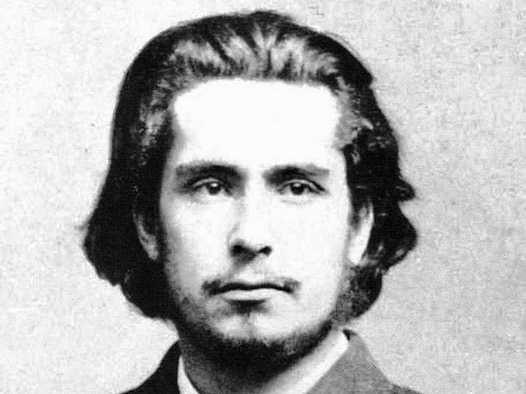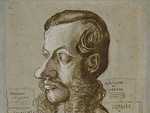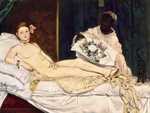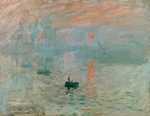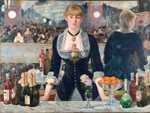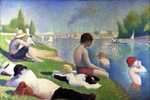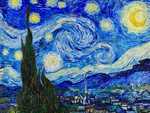1. The Start of the Impressionist Era
The impressionist era commences in 1860, when the impressionists start to take painting classes in Paris and begin making friends with one another.
Some of the impressionists grew up in Paris. They included Edouard Manet and Edgar Degas (who had both lived in Paris from birth) and Pierre-Auguste Renoir (who had moved with his family when he was just three).
The others converged on Paris from other parts of the country and indeed further afield. Claude Monet was born in Paris but moved to Normandy when a young child. His artistic ability was evident from a young age-he earned good money sketching caricatures. Paul Cezanne was born and brought up in Southern France; and Camille Pissarro was born on the Island of St Thomas, where he had returned after attending a boarding school outside Paris.
Painting lessons
The six key impressionists-Manet, Monet, Renoir, Pissarro, Degas and Cezanne-all started taking painting classes in Paris in the early 1860s.
But they did not all study together or become friends immediately. Their teachers included established artists called Thomas Couture, Charles Gleyre and Charles Suisse and some of the first meetings didn't go so well ...
Legend has it that when Cezanne was first introduced to Manet, he apologised to Manet because he had not washed in two weeks!
But the impressionists started to form strong social bonds by the mid 1860s. Most of them took a painting trip to the beautiful Fontainebleau forest outside Paris, and they took to attending the same cafe - Cafe Guerbois on the Avenue de Clichy, close to Montmartre - to discuss artistic and political ideas.
The Academy des Beaux Arts
The biggest problem that the impressionists faced was that the new style of painting that they were developing, which used broad unblended brush-strokes to capture modern scenes, was despised by the conservative arts establishment (which wanted historical, mythological or biblical art).
This mattered. The best way for an artist to make their way was to exhibit their works at the annual Salon des Beaux Arts organised by the Fine Arts Academy and gain favourable reviews, sales and commissions.
But the Academy des Beaux Arts, more often than not, rejected the impressionists works. And when they were accepted, as Manet's Olympia was in 1865, they were lambasted by the critics.
First Impressionist Exhibition
It was their rough treatment at the hands of the Academy that led the impressionists to first moot the idea of holding an independent exhibition in the 1860s. But lack of funds, a hope that things would improve and then the 1870-71 Franco-Prussian war meant that these plans were put on hold.
It was not until 1874 that the first impressionist exhibition was held. All of the key impressionists exhibited with the exception of Manet (he decided to keep taking on the Academy by submitting works to its annual Salon).
In total, 165 works from 30 artists were displayed. And about 3,000 people attended the exhibition over the course of a month, paying a franc each to gain entry.
But the results were predictably poor. The critics lambasted most of the works, the public mainly came to laugh, and few paintings were sold.
One of the most famous put-downs, of Monet's Impression Sunrise, was:
“Wallpaper in its early stages is much more finished than that.”
But this did not stop the impressionists trying again and again. They held eight exhibitions in total, from 1874 to 1886.
2. The end of the Impressionist Period
We consider that the Impressionist Era came to an end with the eighth and final impressionist exhibition in 1886.
The Seventh Exhibition in 1882
The penultimate impressionist exhibition was held in 1882. Though by this stage Cezanne had long-since stopped exhibiting with the others, and Degas also missed this year, the exhibition included works by Monet, Pissarro, Renoir and other impressionists such as Gustave Caillebotte and Berthe Morisot.
The Seventh Exhibition was a divisive affair, with Degas refusing to contribute because his desire to include non-impressionists in the exhibition had been ignored. On the other hand, the exhibition received a number of positive reviews and achieved a large number of sales (largely through the efforts of the impressionists' main dealer at this time Paul Durand-Ruel).
So, whilst the Seventh Exhibition showed that there were cracks within the impressionist group, it also demonstrates that the impressionist period had not come to an end.
Manet's death
Edouard Manet died of syphilis in 1883. Manet had been a source of inspiration and support for the group since the early 1860s, when he was the first to take the battle to the Academy des Beaus Arts.
Manet's funeral was attended by the other impressionists, with Degas remarking that:
"He was even greater than we thought."
1883 was also the year in which Monet moved to Giverny, which was to become his home for the rest of his life, and Durand-Ruel held a number of solo exhibitions for members of the impressionist group.
It can be argued that Manet's death marks the end of the impressionist era; but we think that it continued for three more years ...
The Eight and Final Impressionist Exhibition
Of the six core impressionists, only two (Degas and Pissarro) exhibited at the final impressionist exhibition held in 1886.
Manet had died three years earlier; Cezanne had not exhibited since he received particularly cruel reviews following the third exhibition; and Monet and Renoir decided not to be involved without the support of Durard-Ruel, who was busy preparing for an overseas exhibition.
On the other hand, Mary Cassatt and Berthe Morisot exhibited along with pointillists Georges Seurat and Paul Signac.
On balance, the involvement of Degas, Pissarro, Cassatt and Morisot convinces us that the impressionist era continued until 1886 but no further.
What came next?
Even before 1886, a number of the impressionists had introduced significant changes to their painting techniques. Pissarro, for example, had dabbled with pointillism and colour theory for a number of years before returning to impressionism. Renoir had become more classical in his style, probably to secure lucrative portrait commissions.
The genres that follow impressionism are called post-impressionism and expressionism. To be honest, it is often hard to distinguish between the two.
Post-impressionism has two main differences from impressionism. First, painters like Vincent van Gogh used even broader brush strokes (as can be seen in many of van Gogh's works). Secondly, painters like van Gogh and Cezanne stopped trying to depict the scene in front of them -- they often painted things that were not there or structured their compositions. Van Gogh's Starry Night, Wheatfield with Cypresses and Cezanne's The Bathers are good examples.
Expressionism started in the early 20th century in Germany. Here the artists is not concerned by representing the physical reality in front of him. Instead, he seeks to convey his subjective emotions. Edvard Munch's The Scream is probably the most famous example.


